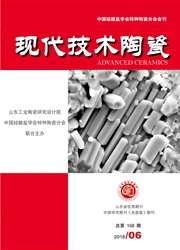

 中文摘要:
中文摘要:
研究人员很早就发现了地质聚合反应终产物中存在类沸石结构。由于不同地质聚合物中硅铝比以及碱组分含量并不固定,因此很难确定地质聚合物中类沸石相的结构。从众多文献中可以看出,地质聚合物与低硅沸石具有组成和结构的相似性。本文阐述了地质聚合物与沸石之间的物质和结构遗传特性,为地质聚合物材料用于吸附和固化重金属离子的研究提供理论依据。目前,利用地质聚合物类分子筛结构来吸附、固定重金属离子以处理重金属废水成为一个研究热点。作为一种绿色、廉价的重金属吸附剂,地质聚合物对铅、铜、镍、铬、镉等重金属都有较好的吸附效果,重金属溶液的初始浓度、pH值、吸附温度、吸附剂用量均对吸附效果有着重要影响。通过对吸附过程中动力学和热力学进行研究发现,地质聚合物对重金属离子的吸附过程更符合二级动力学,且为Langmuir单分子层化学吸附。目前针对地质聚合物吸附重金属离子的吸附条件已有较详细的研究,在适宜条件下能达到较好的吸附效果,吸附量明显高于4A分子筛,这也表明了地质聚合物在去除废水中重金属离子的高效性。
 英文摘要:
英文摘要:
In the study of geopolymer, the researchers found very early that the end products of geopolymerization have zeolite-like structures. Because the Si/A1 molar ratios and alkali component contents are not fixed in different geopolymers, it is difficult to determine the zeolite-like structure in geopolymer. As can be seen from the numerous studies, both the geopolymer and zeolite have similarities in composition and structure. This article identified the structural heredity characteristic between the geopolymer and zeolites, in order to provide a theoretical foundation for exploring geopolymer and broaden the application field of geopolymer. Nowadays, extensive studies have been conducted concerning the potential applications of geopolymers in adsorbing and immobilizing heavy metal in wastewater treatment based on its zeolite-like structure. As a green and low-cost heavy metal adsorbent, geopolymers have excellent performance on Pb2+, Cu2+, Ni2+, Cr3+, Cd2+ adsorption. The initial ion concentration, pH of heavy metal solution, adsorption temperature, and adsorbent dosage have significant impact on the adsorption amount of adsorbent. The kinetic and isotherm researches show that the adsorption process of geopolymer is fit to the second order kinetic model and is proved to be Langmuir adsorption, which is monolayer adsorption. There has been detail researches focused on adsorption conditions of geopolymer adsorbent, and excellent adsorption performance could be obtained under optimal condition. The adsorption amount of geopolymer adsorbent is obviously higher than 4A molecular sieve. It fully demonstrated the feasibility of using geopolymer as heavy metal adsorbent.
 同期刊论文项目
同期刊论文项目
 同项目期刊论文
同项目期刊论文
 期刊信息
期刊信息
